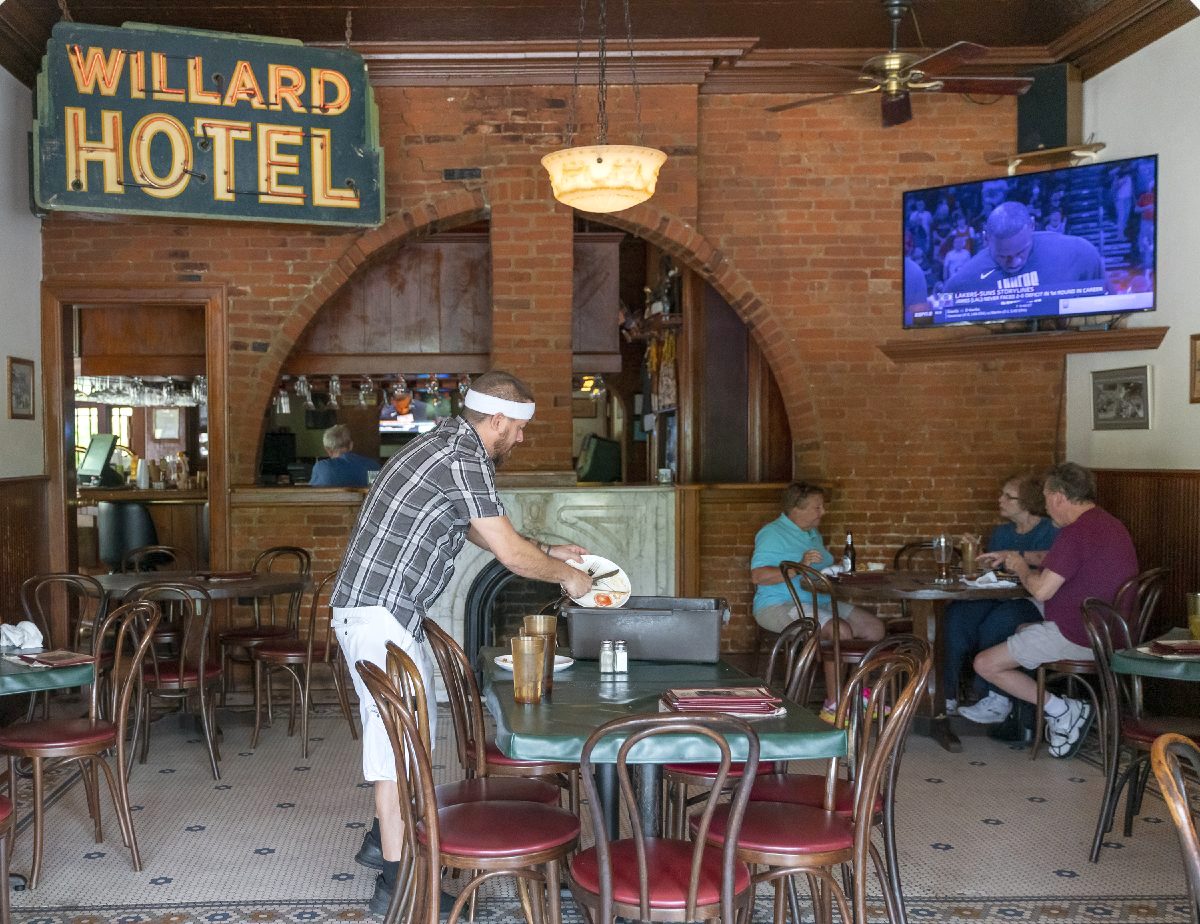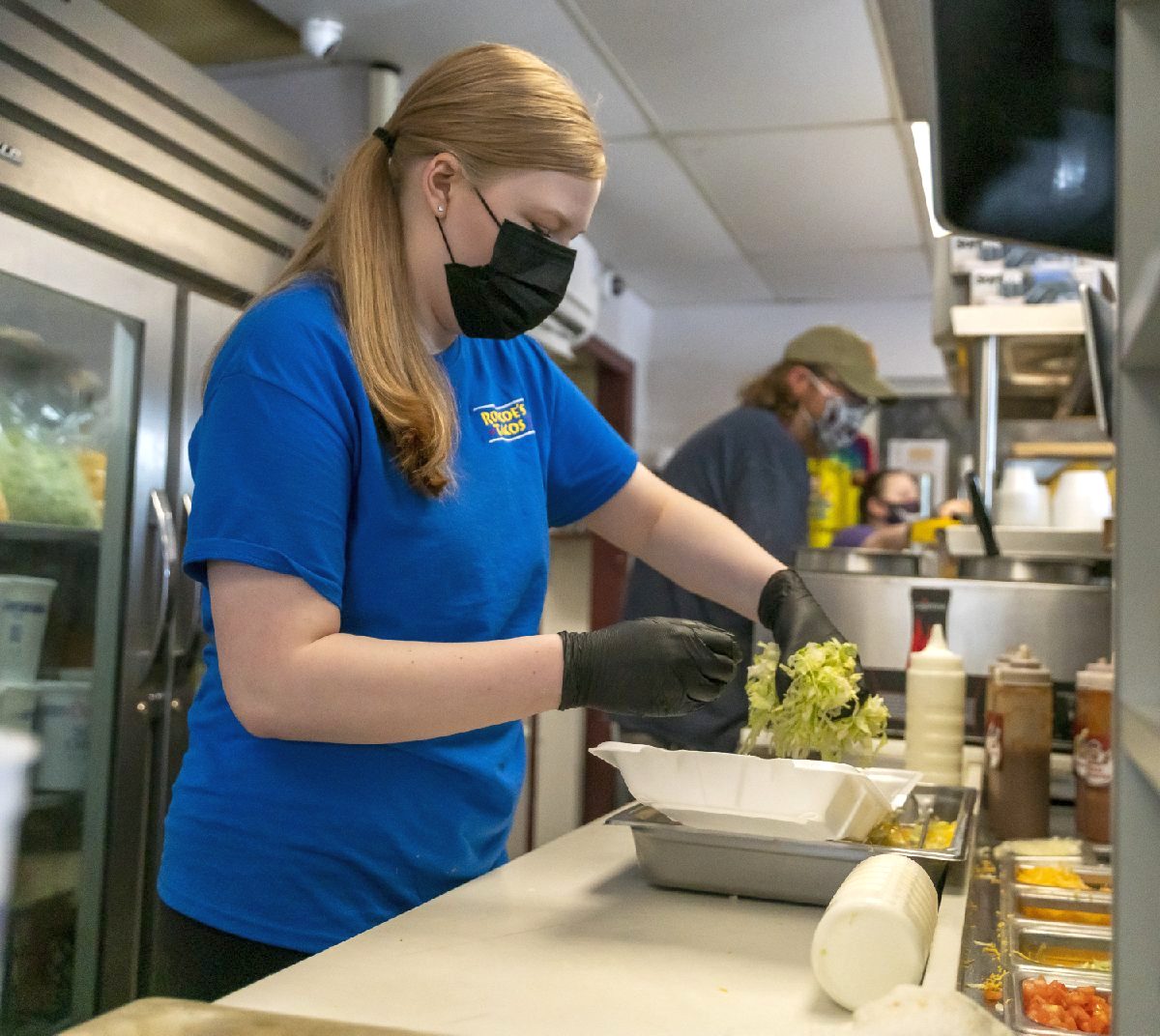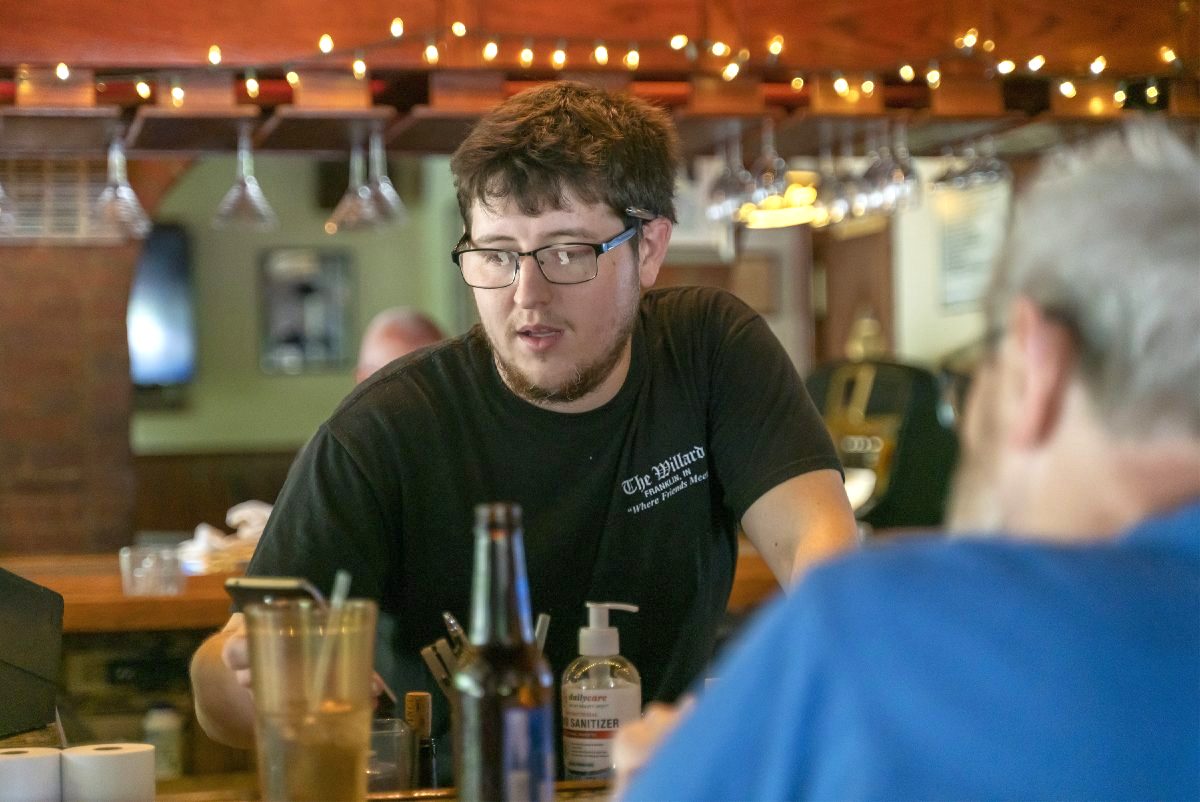
Business is booming again at local restaurants. The problem is, they don’t have enough staff to keep up.
Local business owners survived a tough year due to the coronavirus pandemic, from having to close dining rooms to implementing capacity restrictions. Now, they face a new challenge — finding people to work. Federal unemployment benefits, the availability of higher paying jobs and a recovering local economy are all playing a part in the widespread worker shortage.
“Now hiring” signs are visible outside many businesses across the county. Owners and managers constantly post help wanted ads on social media searching for new hires. Some have had to change operating hours due to the staffing issues.
At The Willard in Franklin, owner Tony Priola has not been able to increase the restaurant’s capacity past 75% — despite lifted restrictions — because he does not have enough staff to cover full capacity.
Business is going great for The Willard, especially now that it is warmer outside and the city’s many festivals are starting up again. But the weekends, especially, pose a challenge. The restaurant’s staff size does not come close to the crowd sizes, which drive up demand, he said.
“We don’t want to overwhelm our staff even more by adding more tables back. But it’s kind of frustrating when you have a hallway full of patrons waiting for a table, and we can’t accommodate them,” Priola said.
Roscoe’s Tacos in Greenwood has the same problem. The popular family-run taco joint closed its doors a year ago, and reopened to massive crowds late last summer.

Rita Townsend, one of the owners, thought they had enough employees, but staffing has been a big problem the last few months. She’s posted job opening signs in the store and online, but she has not had much luck.
“I’m having to work the employees that I do have more hours,” she said. “They’re exhausted, and we just need some relief.”
Roscoe’s has 19 employees, who are paid between $9 and $11 an hour, depending on their experience. The restaurant is expanding to a building next door for carryout and food preparation, so they’re desperate to find at least five more employees to manage both buildings, Townsend said.
Many are quick to blame the state and federal government’s extended unemployment benefits. Non-working Hoosiers are making more than $600 a week on unemployment, at least until next month.
Gov. Eric Holcomb announced this month distribution of federal pandemic unemployment assistance in the state will end June 19, months before the federal cutoff date of Sept. 4. Holcomb said in a statement, “there are help wanted signs posted all over Indiana.”
The $300 payments from federal unemployment have more than doubled Indiana’s average $280 weekly unemployment payment, which has a maximum of $390 a week. Nearly 170,000 Indiana residents have collected the extra $300 payments, according to the state’s Department of Workforce Development.
Townsend does not think that is the entire root of the problem though, she said.
“The restaurant business has such a bad reputation, and I’ll say it, because of big corporations treating their employees like crap,” Townsend said.
Some economists have also said ending unemployment benefits will not solve the problem, as more workers are just demanding higher wages.
A preliminary study by Nicolas Petrosky-Nadeau and Robert G. Valletta at the Federal Reserve Bank of San Francisco concluded that enhanced federal unemployment benefits are not the sole cause of worker shortages.
The two economists calculated a worker with a high school education would have to be offered unemployment benefits at or above 155% of their previous employed wages to turn down a job offer at the same rate of pay.
At Ann’s Restaurant in Franklin, manager Jim Klein is have a hard time finding good employees, he said.
“It’s been hard to find restaurant workers … I don’t really see it stopping anytime soon. A lot of people have had a bad taste from working at restaurants during pandemic,” Klein said.
Employees at Ann’s make above minimum wage, and make good tips, but the staff is stretched thin, he said.
“The people (who) have been there are just exhausted. They can’t really take vacations because I’ve got nobody to cover them. It’s making it hard to maintain the good employees that I have,” Klein said.
At least in the restaurant business, local owners find it hard to compete with higher paying jobs. They can only raise wages so much, Townsend said.
“I would love to, but it’s hard for a mom and pop to make that. If the minimum wage is raised to $15, then everyone already working here will need a raise. That’s a big cut out of the payroll,” she said.
Klein said it is hard to compete in an area where more jobs are becoming available, and places such as Amazon in Greenwood start new employees at as much as $18 an hour.
Johnson County’s unemployment rate remained low at 3.1% in April, an improvement from March and 10.5% better than it was at the same time last year.
“The problem is you’re already in a very employed area where there are too many jobs for the amount of people that live here,” Klein said.
The Associated Press contributed to this report.





